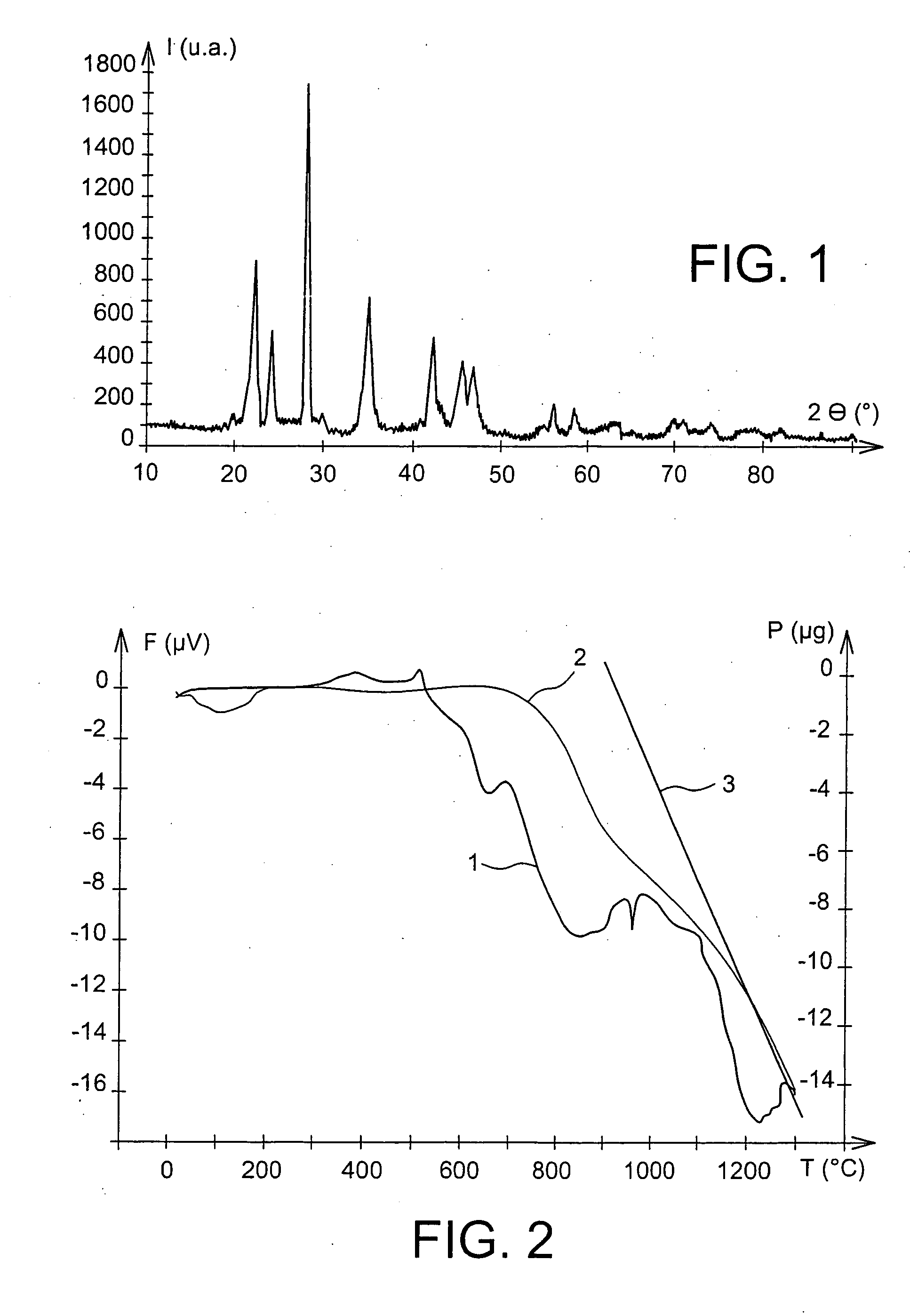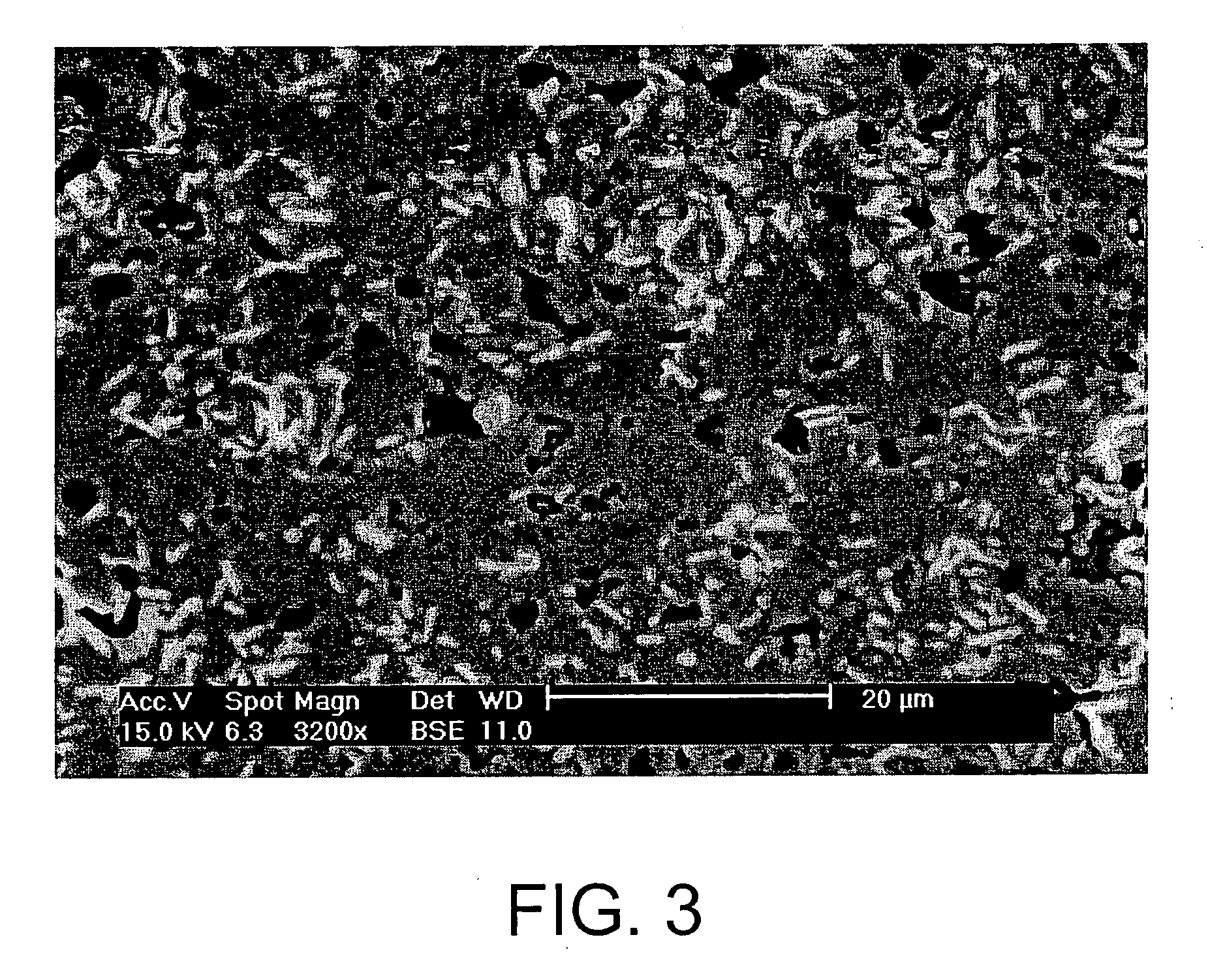Use of sintered mixed carbonated for the confinement of radioactive carbon
a technology of radioactive carbon and mixed carbonates, which is applied in the direction of rare earth metal compounds, inorganic chemistry, reactor fuel elements, etc., can solve the problems of bitumen encapsulation, bitumen encapsulation, and the safety of bitumen cannot be questioned
- Summary
- Abstract
- Description
- Claims
- Application Information
AI Technical Summary
Benefits of technology
Problems solved by technology
Method used
Image
Examples
example 1
mixed BaCa(CO3)2 carbonate
[0051] 21.198 g of Na2CO3 were dissolved in 1 liter of water in beaker 1; [0052] 48.85 g of BaCl2+22.196 g of CaCl2 were dissolved in 2 liters of water in beaker 2.
[0053] The contents of the two beakers were then mixed. A precipitate was obtained.
[0054] The precipitate obtained was filtered and then rinsed three times with ultrapure distilled water.
[0055] The powder obtained was the desired mixed carbonate, namely BaCa (CO3)2.
[0056] The decarbonation of this BaCa (CO3)2 powder advantageously started at 680° C., as the DTA / TGA spectrum illustrated in the appended FIG. 2 shows.
[0057] By pressing at 15 MPa followed by natural sintering at 580° C. for 2 hours, it was possible to obtain pellets having the following properties: [0058] a densification of greater than 90% (see FIG. 3); [0059] a high hardness, of between 4 and 4.5 on the Mohs scale; [0060] a carbon content of around 8% by weight for a density of 3.7, which means a volume of 3.31 of waste for co...
PUM
| Property | Measurement | Unit |
|---|---|---|
| pressure | aaaaa | aaaaa |
| temperature | aaaaa | aaaaa |
| pressure | aaaaa | aaaaa |
Abstract
Description
Claims
Application Information
 Login to View More
Login to View More - R&D
- Intellectual Property
- Life Sciences
- Materials
- Tech Scout
- Unparalleled Data Quality
- Higher Quality Content
- 60% Fewer Hallucinations
Browse by: Latest US Patents, China's latest patents, Technical Efficacy Thesaurus, Application Domain, Technology Topic, Popular Technical Reports.
© 2025 PatSnap. All rights reserved.Legal|Privacy policy|Modern Slavery Act Transparency Statement|Sitemap|About US| Contact US: help@patsnap.com



